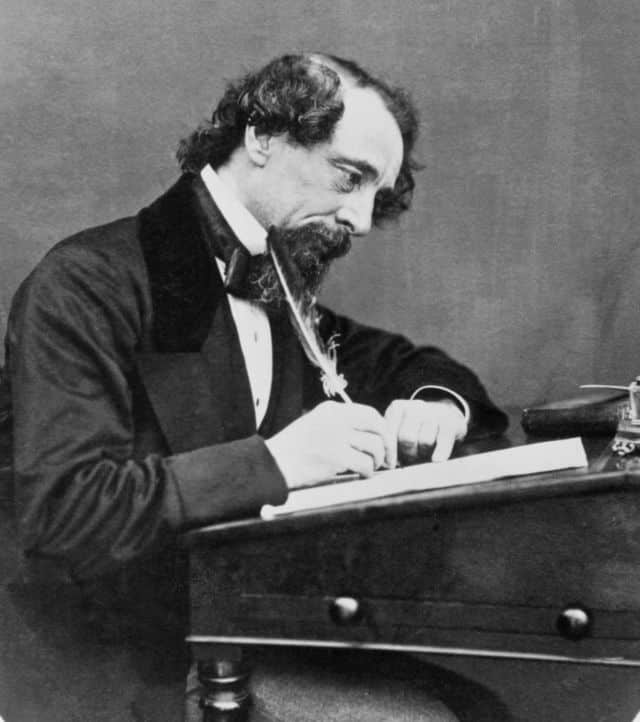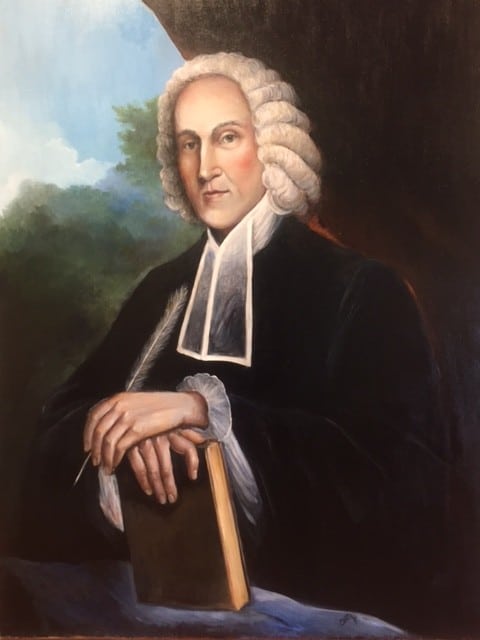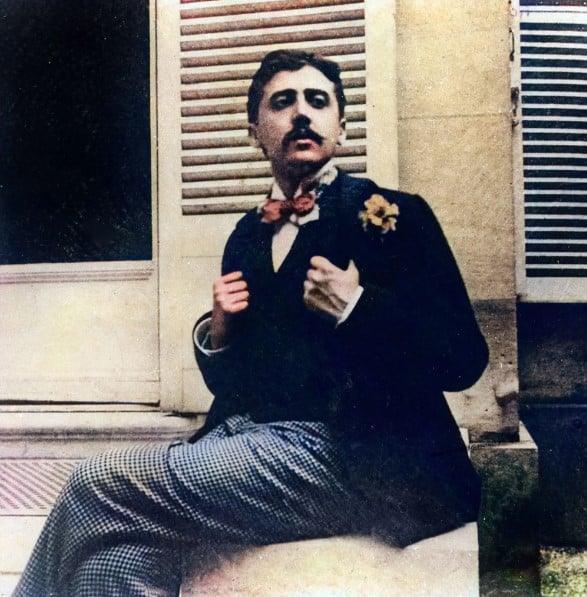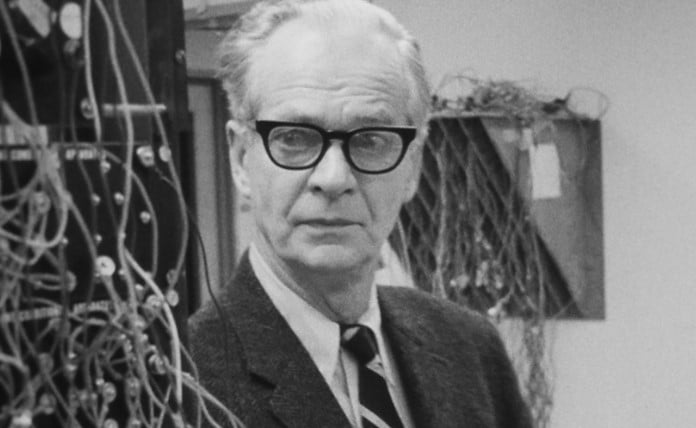8 Historical Figures Whose Quirky Work Habits Unlike Anyone Else
It is said that behind every great mind lies a collection of peculiar work habits. Some people can’t work at home, while others always have a pen and paper, even when chopping wood.
But no matter what they are, one thing is undeniable: these quirky habits contribute to helping historical figures create many enduring works.
Join us as we delve into the curious and often surprising work habits of some of the world’s most celebrated individuals.
1. Beethoven

Beethoven started his day at dawn, immediately diving into his work. He prepared his own breakfast, which was always coffee. He insisted on using exactly sixty beans per cup, often counting them out individually to ensure precision.
Afterward, he would sit at his desk and compose until 2:00 or 3:00 pm, taking occasional outdoor walks to stimulate his creativity.
After a midday dinner, Beethoven took a long, vigorous walk, often for the rest of the afternoon. He carried a pencil and music paper to jot down ideas. As evening approached, he might visit a tavern to read newspapers.
He spent evenings with friends or at the theater, but in winter, he preferred to stay home and read. His supper was simple, usually a bowl of soup and leftovers, accompanied by wine. Afterward, he enjoyed a glass of beer and a pipe. Beethoven rarely composed in the evening and went to bed early, by 10:00 pm at the latest.

His bathing habits were quite unique and noteworthy. Anton Schindler, Beethoven’s pupil and secretary, detailed these routines in the biography Beethoven As I Knew Him:
“Washing and bathing were among the most pressing necessities of Beethoven’s life. In this respect he was indeed an Oriental: to his way of thinking Mohammed did not exaggerate a whit in the number of ablutions he prescribed.
If he did not dress to go out during the morning working hours, he would stand in great de?shabille? at his washstand and pour large pitchers of water over his hands, bellowing up and down the scale or sometimes humming loudly to himself.
Then he would stride around his room with rolling or staring eyes, jot something down, then resume his pouring of water and loud singing.”
2. Charles Dickens

Dickens approached writing with the same discipline as any regular job. He started his day early, waking up at 7am, having breakfast at 8am, and settling into his study to work by 9am. His morning was dedicated to uninterrupted writing until 2pm when he took a break for lunch. After lunch, he went on a daily three-hour walk around London.
These walks were crucial to Dickens’s success. They gave him time to reflect on his writing and plan future developments. Growing up in London, Dickens knew the city intimately. His daily walks allowed him to observe the city’s life firsthand, helping him capture its authentic and raw essence in his stories.
Moreover, Dickens always carried these talismans with him during his travels. He would even rearrange the furniture in hotels and guesthouses to mimic the layout of his home office as closely as possible. His peculiar habits extended to his bedroom as well.
Dickens insisted on sleeping facing north, convinced that it better aligned him with the Earth’s electrical currents.
3. Jonathan Edwards

Jonathan Edwards is best known for his fiery sermon “Sinners in the Hands of an Angry God,” but his dedication to his work was equally remarkable.
Edwards would rise before dawn and spend up to 13 hours a day reading and writing his sermons, often forgoing meals to stay immersed in his studies.
Even during short breaks to chop wood or take walks, he carried a pen and paper to capture his thoughts. If inspiration struck while traveling on horseback or away from his desk, he used a clever trick.
He pinned small pieces of paper to his clothing as reminders, which he would later use to jot down his insights.
4. Salvador Dali

Salvador Dali, a master of surrealism, was renowned for his ability to tap into the unconscious mind to create his imaginative artworks. Paintings like “The Persistence of Memory” and “Swans Reflecting Elephants” showcase his use of mental techniques to blend dreams and reality.
To start his day with creativity, Dali would immediately immerse himself in different stimuli upon waking. He often stared at his hand while it was still asleep to enter a hypnagogic state, a dreamy, half-awake condition that made his mind more open to inspiration and helped generate his unique artistic ideas.
Once out of bed, Dali would further stimulate his creativity by making his environment uncomfortable. He would sit in a wooden chair, holding a heavy key over a plate. As he dozed off, the key would drop, hitting the plate with a loud clang and waking him up.
This “slumber with a key” method allowed Dali to access a semi-awake state, unlocking his creative potential.
5. Maya Angelou

The celebrated poet and author of “I Know Why the Caged Bird Sings” preferred not to work at home, finding it too distracting. Instead, Maya Angelou chose the quiet anonymity of what she called “tiny, mean” hotel rooms to focus on her writing.
Every morning at 6:30 a.m., she would head to a hotel, where she paid for a simple room dedicated to her work. Inside, she kept only a dictionary, a Bible, a deck of cards, and a bottle of sherry. Angelou aimed to write from 7:00 a.m. to 2:00 p.m., and then she deliberately left her work behind, maintaining a clear separation between her work life and home life.
Angelou made sure these rooms were as bare as possible to help her concentrate. She often wrote while lying on her side on the hotel bed. In an interview with the “Paris Review,” she admitted that one of her elbows had become “rough with callouses” from spending so many hours a day in that position.
6. Marcel Proust

While writing his 3,000-page novel “In Search of Lost Time” (also known as “Remembrance of Things Past”) in the early 1900s, French writer Marcel Proust spent most of his time in his bedroom.
He usually woke up around 3 or 4 in the afternoon, then had coffee and croissants for his meal and inhaled opium-laced tobacco powder to help his asthma.

Proust did his work from the comfort of his bed, propped up on several pillows. Despite this seemingly relaxed setup, he found writing his classic novel extremely exhausting. “After ten pages,” he complained, “I am shattered.”
7. B.F. Skinner

Skinner’s day typically kicked off around 6 to 6:30 a.m., usually after catching up on the morning radio news. His routine began with a straightforward breakfast of cornflakes, accompanied by a cup of coffee brewed automatically by the stove timer.
By 7 a.m, Skinner would retreat to his cozy walnut-paneled study in the basement, where he focused work and deep contemplation.
He meticulously logged his work hours using a unique desk lamp that triggered a clock. This clock meticulously tracked his work time, allowing him to monitor his productivity. For every twelve hours recorded by the clock, Skinner would sketch a cumulative curve, illustrating his efficiency.
In the afternoons, Skinner enjoyed gardening or swimming, which helped him relax and recharge. He valued hobbies and spent evenings with his wife, Yvonne, reading, playing games, and listening to music.
Before bedtime around 9:30 or 10:00 p.m., he did some light reading and avoided work. Despite sleeping early, he often woke up for an hour during the night for reflection and taking notes.
8. Demosthenes

Demosthenes, an ancient Greek statesman, was renowned for his captivating speaking skills. However, his ability didn’t come easily; it was the result of a disciplined routine.
He devoted long hours to studying rhetoric and law in a specially constructed underground study. Additionally, he worked with an actor to master control over his body movements.
To overcome challenges such as a lisp and shortness of breath, Demosthenes employed unconventional methods. He practiced speaking with pebbles in his mouth, shouted speeches while running uphill, and even delivered them amid the crashing waves at the beach.
Moreover, he adopted a peculiar strategy to combat procrastination: as a young man, he shaved off all the hair on one side of his head, hoping that looking ridiculous would keep him focused on his studies at home.

